
Game Details:
Developer: Game FreakPublisher: Nintendo / The Pokémon Company
Platform: Nintendo DS
Release Date(s): September 12, 2009 (JPN), February 4, 2010 (KOR), March 14, 2010 (USA), March 26, 2010 (EUR), March 25, 2010 (AUS)
Mode(s): Single Player, Multiplayer
Rating(s): CERO: A (JPN), ESRB: E (USA), PEGI: 3
Controller(s): Nintendo DS, PokéWalker
Extra Contents: HGSS Main Page, Iwata Asks HGSS
Iwata Asks Interview - Pokémon HeartGold Version & SoulSilver Version
The following is a transcription of an interview conducted by Nintendo President, Satoru Iwata. It was originally posted on the Official Nintendo website.Interview Table of Contents
- Just Making The Last Train
- The King Of Portable Toys
- Just Being President Was A Waste!
- The Power of Science is Staggering!
- We Were Greedy With The Features
- Pokémon Players Past and Present
1. Just Making The Last Train
Iwata: For this Iwata Asks interview I am joined by Tsunekazu Ishihara-san, President and CEO of The Pokémon Company, and Shigeki Morimoto-san from Game Freak. Thank you both for coming today.Ishihara/Morimoto: Thank you.
Iwata: While the Iwata Asks series originally featured interviews with members of Nintendo staff, today we have two guests who come from different companies. At the same time, I think of Ishihara-san as an ally who I’ve fought alongside for many years. (laughs) I personally feel an extremely strong affinity with Pokémon thanks to the long period of time that I’ve been producing products together with Ishihara-san.
It goes without saying that we'll be discussing the latest Pokémon titles today but I think that we should start by looking at the history of Pokémon in order to see how it connects to HeartGold Version and SoulSilver Version.
Ishihara: Okay.
Iwata: I’d like to begin with you, if I may, Ishihara-san. You're President and CEO of The Pokémon Company1, as well as being chairman of Creatures Inc.2 …
1 The Pokémon Company was established in 2000 and, in addition to managing the Pokémon brand, it runs six Pokémon Centers around Japan.
2 Creatures Inc. was established in 1995. In addition to developing Pokémon video games and playing cards, it has made games such as No No No Puzzle Chailian for the Game Boy Advance and ‘Walk with me! Do you know your walking routine?’ for Nintendo DS.
Ishihara: Well, that’s true now, but when the first Pokémon project began, I was a producer working on the development of Pokémon Red and Green4 alongside Game Freak 3.
3 Game Freak, Inc. was founded in 1989 and develops video games including titles in the Pokémon series.
4 Red and Green refer to Pokémon Red Version and Pokémon Green Version, the first titles in the Pokémon series. They were released for the Game Boy in Japan on 27th February 1996. They were later released worldwide as Red and Blue.
Iwata: And how about you, Morimoto-san?
Morimoto: My name is Morimoto and I work for Game Freak. I was the director on the latest titles, whereas I was involved in the development of Red and Green as a programmer.
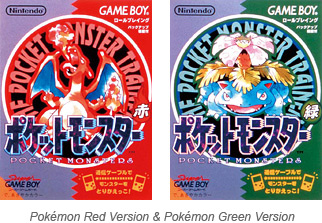
Iwata: Now, planning for Pokémon began in…
Ishihara: It was 1990.
Iwata: Red and Green were released six years later, in February 1996, which means they had an incredibly long development period.
Ishihara: Yes, they really did. (laughs wryly)
Iwata: During Pokémon’s extended development period, I tried to stay abreast of what you were doing as much as possible. Then when Red and Green were released, it was such a quiet, understated start that it was impossible to imagine the way they would go on to explode in popularity.
Ishihara: That’s right. We originally completed the titles in October of the year prior to their release and wanted to release them quickly. But we missed the end of year sales season and finally released the games at the end of February of the following year – the very worst time of year to release games! (laughs)
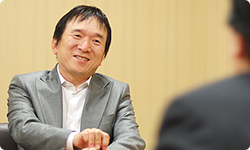
Iwata: What’s more, at that time there was this slight sense in the air that the Game Boy5 might have reached the end of its shelf life, wasn’t there?
5 The Game Boy was a handheld console with a monochrome screen released in Japan in April 1989. Other consoles in the Game Boy line included the Game Boy Pocket released in 1996, the Game Boy Light and Game Boy Color released in 1998 and the Game Boy Advance released in 2001.
Ishihara: That's why I had this feeling that perhaps we were going to miss the last train. (laughs) After all, we’d dragged it out until the very end of the console’s lifespan.
Iwata: Well, you did somehow manage to make that last train! (laughs)
Ishihara: Somehow we made it! (laughs) When this project originally began, the concept was that we were developing software for a new platform. Satoshi Tajiri-san 6 set up Game Freak in 1989…
6 Satoshi Tajiri is the creator of the Pokémon series and the president of Game Freak.
Iwata: Which was the same time as the release of the Game Boy.
Ishihara: That's why it was originally conceived as a game that would be developed for this new hardware. Then there were substantial delays in completing the title… Still, as the producer, when I saw the content of Red and Green, my personal feeling was that of all the titles I had experience of, that I had played or worked on as a producer, this was of the very highest calibre. That is to say, I was confident that this was streets ahead of the crowd in terms of sheer enjoyment. But with the release date being when it was, I had considerable concerns about the title at first.
Iwata: I was involved in setting up Creatures Inc. and I remember sitting next to you, Ishihara-san, when you were deciding on the initial number of units to be shipped.
Ishihara: That’s right, you were! (laughs)
Iwata: I recall that the initial number of units to be shipped was smaller than I’d expected… But even so, I had quite high expectations. With that number of units, I imagined that they'd fly out of the shops and that stock would run dry very quickly. But sadly, that’s wasn’t to be…
Ishihara: I remember looking at the weekly sales figures and feeling that we were just hovering around the edges of the top ten.
Iwata: So at the outset, no one could have predicted that Pokémon would end up enjoying such worldwide popularity.
Ishihara: It really was a quiet start.
Iwata: But in spite of that sluggish start, things ended up turning around significantly. What do you attribute that to?
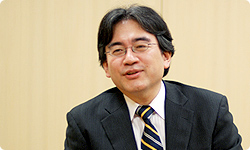
Ishihara: I think one reason is the power of word of mouth. In 1996, people weren't writing their own Internet blogs, but word steadily spread about how much fun Pokémon was. In addition, I strongly felt that the power of the media, centred around CoroCoro Comic7, served to accelerate the growth in Pokémon’s popularity. Finally, there was also the small matter of Mew, the Pokémon that Morimoto-san contrived as a kind of prank...
7 CoroCoro Comic is a monthly manga magazine aimed at primary school students first published in 1977 by Shogakukan. In addition to manga comic strips, it also features articles on hobbies and video games.
Morimoto: Well, I’m not sure if “contrived” is exactly the right word… (laughs wryly)
Ishihara: There’s no denying that Mew’s existence played an extremely significant role…
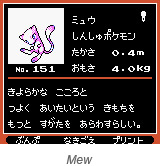
Morimoto: We put Mew in right at the very end. The cartridge was really full and there wasn’t room for much more on there. Then the debug features which weren't going to be included in the final version of the game were removed, creating a miniscule 300 bytes of free space. So we thought that we could slot Mew in there. What we did would be unthinkable nowadays!
Ishihara: This is in spite of being told after debug ended that you weren’t to tamper with even a single bit! (laughs wryly)
Iwata: What’s the point of going through all the trouble of the debug process if you’re going to go and fiddle with the game afterwards…? I’d venture that this all came from Morimoto-san’s mischievous nature.
Morimoto: Well, it was a prank that everyone right up to Tajiri-san was in on. But even though Mew was in there…
Iwata: …It wasn't actually supposed to appear in the game, right?
Morimoto: Right. Unless we could think about any good opportunity to do so, the existence of Mew wouldn’t have been revealed to the public. It was left in there in case it was suitable for some post-launch activity. But if there wasn’t anyone among ourselves who wanted to use it, I thought it would be fine to just leave it as it was.

Iwata: Mew could very well have ended up never appearing in the game.
Morimoto: Right. But then due to an unforeseen bug, Mew ended up appearing in some players’ games. It looked like we planned all of this, but that wasn’t the case. So although it caused all sorts of problems to many concerned, fortunately enough it ended up having a positive effect.
Iwata: You can never predict how things are going to go, can you?
Morimoto: You really can’t.
Iwata: That’s how the “Legendary Pokémon Offer”8 came about.
8 The “Legendary Pokémon Offer” was announced in the April 1996 edition of CoroCoro Comic. Twenty winners would be selected who could send their game cartridge in so that the Mew data would be uploaded onto it. There were approximately 78,000 entrants.
Morimoto: Right.
Iwata: There was a really incredible response to CoroCoro Comic’s announcement of the Mew offer. I feel that’s really when things turned round for Pokémon.
Ishihara: I believe so too. The monthly sales we’d had up to then began to be equalled by weekly sales, before increasing to become three then four times larger.
Iwata: I remember feeling that I’d never really witnessed a game selling like that before.
Ishihara: By the time it ranked number one in weekly sales, more than a year and a half had gone by since the game was first released.
Iwata: It’s like the way traditional enka ballads explode in popularity only about a year and a half after they've been released. (laughs)
(Editor’s note: Enkas are melodramatic Japanese popular songs depicting the emotions and experience of Japanese people, with its distinctive singing style using tremolo.)
Ishihara: That’s exactly what it was like! (laughs)
2. The King Of Portable Toys
Iwata: At the same time that Red and Green were gathering popularity, there were a whole host of Pokémon spin-off products being released. Along with various licensed products that were appearing one after the other such as trading cards9, an animated series10 began to be broadcast and a movie11 was released. At that time, Ishihara-san, you would chair a weekly meeting where you’d oversee each of the products being licensed.9 A trading card game based on the world of Pokémon was released in October 1996, allowing players to do battle with each other as well as collect and trade cards.
10 An animated series broadcast by TV Tokyo followed the adventures of Satoshi as he aimed to become a Pokémon Master. It began airing in Japan in April 1997. In the UK the character Satoshi is called Ash Ketchum.
11 The first Pokémon movie, Mewtwo Strikes Back was released in Japan in July 1998.
Ishihara: That was the copyright meeting. At first, there were between 10 and 20 new proposals for various products each week. We used to line them up on a large table in the meeting room...
Morimoto: But it wasn’t long before we ran out of space on the desk... (laughs)
Iwata: I had the opportunity to attend quite a few of those copyright meetings and I was really taken aback. Ishihara-san, you weren't simply giving a thumbs up or a thumbs down to the continuous flow of product proposals, but you were making all sorts of specific recommendations on how precisely this or that should be done… What left a really deep impression on me were your words: "We need to demand to know why this product should use the Pokémon brand".
Ishihara: Yes, I did say that.
Iwata: You weren’t simply sticking pictures of Pokémon onto a variety of products, but you’d always say: "I want to know the reason why this Pokémon should be used on this product." What’s more, if there was any lack of ideas, you'd actually get people to come up with more ideas right there and then. I remember feeling that to keep doing that once a week was a superhuman feat.
Usually, when you continuously do the same thing, you grow used to it and aren’t able to maintain the same focus. But you’re different, Ishihara-san. That’s why, when I explain to other people what kind of person Ishihara-san is, I say: “He’s a very unusual person in that he combines concentration with stamina.” (laughs) I say that a lot.
Ishihara: (laughs)
Iwata: There’s one more thing that sticks in my mind. I recall how all of us who were involved in establishing Creatures, Inc. used to call Ishihara-san "the King of Portable Toys". (laughs) Do you remember that?
Ishihara: I do. (laughs) You did indeed give me that title.
Iwata: Well, you have such a broad interest and deep fondness for portable toys, including electronic games, that we felt you really deserved that title.
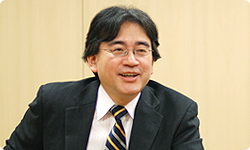
Ishihara: Well, I’ve always liked portable things - items that are compact enough to carry around with you and which you can customise to your own tastes. Moreover, if it’s possible, I like items you can trade with your friends, where both parties benefit from that exchange. In that way, these items also become a means of communication and I always felt a really strong desire to manufacture that kind of product. If you boil down that desire…
Iwata: …It’s a perfect definition of Pokémon! (laughs)
Ishihara: Exactly! (laughs) It’s a perfect definition of Pokémon, or to put it a different way, it's a perfect definition of the Nintendo DS too. Particularly in the case of the Nintendo DSi, you can customise it to really make it your own as “My DS”, it contains a whole range of tools for communication and it also has room for expansion. You can steadily enhance these tools and hone the device itself so it has the ability to eventually evolve. I think those kinds of elements are vital so I think that both Pokémon and the Nintendo DSi are the ultimate “Kings of Portable Toys”.
Iwata: You’ve just used the term “ultimate” and I feel that even in their names, Gold and Silver12 were meant to be the ultimate in Pokémon games.

12 Pokémon Gold Version and Pokémon Silver Version, in which differently-coloured Pokémon appear, were released in Japan on 21st November 1999. They were also compatible with the Game Boy Color.
Ishihara: That’s right. After we released Red and Green, we began working on these titles, thinking that the ultimate in Pokémon games could only ever be Gold and Silver.
Iwata: Not in your wildest dreams did you think that you’d be making more and more games after Gold and Silver. (laughs)
Ishihara: The reason that I licensed so many products and developed things like the trading cards was basically to ensure that Gold and Silver were successful. I felt that this was my primary role. So at that time, I worked with the assumption that after we put out Gold and Silver, my work as far as Pokémon was concerned would be done.
Iwata: I see.
Ishihara: So for me, Gold and Silver represented the finish line.

Iwata: They were the finish line?
Ishihara: I didn’t intend to make any more Pokémon titles. I even thought that once we entered the twenty-first century, it would be time for me to do something else entirely. (laughs)
Iwata: (laughs)
Ishihara: I was determined to create the optimum conditions for Gold and Silver’s release. That’s why I initially opposed even the animated series…
Iwata: Why was that?
Ishihara: Well, after researching all sorts of previous data, I learned that animated series on television tend not to last very long. So even when a series based on a game starts, it tends to last six months or, at most, a year.
Iwata: It would be awful if the series was already over before the game was even out.
Ishihara: Exactly. The animated series started in April 1997, and if it had stopped broadcasting in 1998, what would we have done then? We had made Gold and Silver with the intention of releasing them in 1998.
Iwata: But you didn’t manage to get Gold and Silver ready in time either, did you? (laughs)
Ishihara: That’s right. (laughs) We originally started work on Gold and Silver right after releasing Red and Green, and then just when we were racing forward with the development, Tajiri-san came to us and said: "We've finished one!" I thought that this was really quick and asked him what it was, to which he replied: "We've finished 'Blue13'!" (laughs)
All: (laughter)

13 Pokémon Blue Version, a version of Red and Green featuring different colour schemes, was released as a limited edition on 15th October 1996 before going on general release on 10th October 1999.
Iwata: Even though you’d been waiting for Gold and Silver? (laughs)
Ishihara: And then after that, we made Pikachu14... (laughs)
14 Pokémon Yellow Version: Special Pikachu Edition was, like Blue, a version of Red and Green with a different colour scheme but it also had a number of value-added features such as being able to walk around with Pokémon. Its release was timed to coincide with a movie released on 12th September 1998.
Iwata: That’s right. (laughs)

Ishihara: I said: "Now we’ve got Yellow!?" (laughs)
Iwata: Pikachu was really fun, but because everyone was waiting for Gold and Silver, as you can imagine there was a sense that people were thinking: "I’m not sure they should be putting out Yellow."
Ishihara: After all, it was also the year that Gold and Silver were scheduled to be released.
Iwata: That’s right.
Ishihara: It was at that point that I decided that there was no point in rushing so I said things like: "We may as well make the Pokémon Pikachu15". (laughs)
15 Pokémon Pikachu was a Pikachu-branded pedometer released on 27th March 1998, where depending on the number of steps taken, Pikachu would become happier. It also featured mini-games.
Iwata: That was you showing that you were worthy of the title of "King of Portable Toys"! (laughs)
All: (laughter)
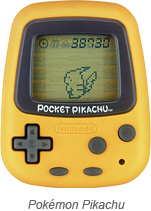
3. Just Being President Was A Waste!
Iwata: But even so, the original Gold and Silver had a very difficult birth.Ishihara: Those titles were released in November 1999 which means that it took three and a half years to complete them.
Morimoto: Actually, at that time we had very few programmers. That wasn’t just the case for Gold and Silver but for Red and Green as well. There were only about four programmers.
Iwata: That’s really a tiny number. Making a game on that scale with so few programmers would be unthinkable these days. And the way those games were put together was very complex.
Morimoto: What’s more, though we were creating the games with a very small team, we were very greedy in terms of all the features we wanted to include in the games. I think that may be why they experienced such a difficult birth.
Iwata: And then, just when Game Freak was snowed under with the development of Gold and Silver, discussion of producing overseas versions began.
Ishihara: Red and Green had turned into such a phenomenon in Japan that it was requested that we release them in America. But working on the overseas versions was going to set back the development of Gold and Silver even further.
Iwata: Although I wasn't working for Nintendo at that stage, I ended up acting as a go-between for Nintendo and you for some reason. (laughs)
Ishihara: That's right.
Iwata: At that time I wasn’t a Nintendo employee but was President of HAL Laboratory. At the same time, I was a board member at Creatures Inc. and I ended up being involved in analysing the best way to localise the overseas versions of Red and Green. For that reason, I got hold of the source code for Red and Green and I would study that and suggest ways to localise it to the relevant department at Nintendo.
Ishihara: At the same time, Pokémon Stadium16 came out...
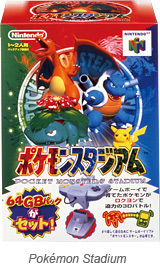
16 Pokémon Stadium was a game released in Japan on 1st August 1998 for Nintendo 64 that allowed players to have battles between 3D Pokémon and manage their Pokédex. It was compatible with Pokémon Red, Green, Blue and Yellow.
Iwata: Right. (laughs) You decided to release Pokémon Stadium for the Nintendo 64 and the first task was to analyse Red and Green’s battle logic and send it over to Miyamoto-san and his team. You’d normally expect there to be a specification document, but there was nothing of the sort…
Morimoto: I’m so sorry! (laughs)
Iwata: No, no, it’s fine! (laughs) Studying the program for the Pokémon battle system was part of my job.
Morimoto: I created that battle programme and it really took a long time to put together. But when I heard that Iwata-san had been able to port it over in about a week and that it was already working… Well, I thought: “What kind of company president is this!?” (laughs)
All: (laughter)
Morimoto: I was saying things like: “Is that guy a programmer? Or is he the President?” (laughs)
Iwata: To be blunt, at the time I was more of a programmer than I was a company president. (laughs)
Morimoto: (laughs) I was really taken aback that you could get to grips with such a complicated programme in such a short space of time.
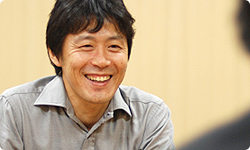
Ishihara: I remember thinking that there just weren’t that many people out there who would be able to read the entire Game Boy source code, which was by no means written in a highly-refined programming language, and grasp how everything connected with everything else. So Iwata-san, you analysed the whole thing and reworked the code, decided on the way to localise Red and Green, got the battle system running on N64… I was gobsmacked that you managed all of that…
Iwata: Well, at the time, I felt that for the whole team at Nintendo, the biggest priority was not to do anything that would adversely influence the development of Gold and Silver. So I very naturally slotted in on the development side for Pokémon.
Morimoto: What's more, there were the tools for compressing the Pokémon graphic code…
Iwata: Ah yes, the compression tools.
Morimoto: You were kind enough to create those tools.
Iwata: Yes. (laughs) Well, I had heard from Ishihara-san that you’d been rather concerned about it.
Morimoto: At that point, we got a little carried away and were making all sorts of demands, saying: “This part isn’t quite right – do you think you could fix it?” We had some nerve to be making those requests to a company president… (laughs)
Iwata: Well, I was willing to do whatever I could! (laughs)
Ishihara: It would have been a waste to just have you as President! (laughs)
All: (laughter)
Iwata: Being able to participate in that small way in Pokémon, I came to feel a real affinity for the software. In any case, while it was tough going, Gold and Silver were successfully released.
Ishihara: I remember that when Gold and Silver were released, I felt like a burden had finally been lifted from my shoulders. We’d had our sights set on the finish line of Gold and Silver for so long, and now that we'd finally completed the major series running right through from Red and Blue, I felt I could say to Tajiri-san: “I’ve fulfilled my duty!”
Iwata: But that didn’t turn out to be the finish line.
Ishihara: No, it didn’t turn out to be the finish line! (laughs) Once we’d released Gold and Silver and it was selling even faster than Red and Green, I couldn’t very well get off the ride halfway through saying: “Nice work everyone. Good luck from here on in!”
Iwata: When Gold and Silver proved so popular, the number of proposals for related products coming your way increased.
Ishihara: Yes, and it wasn’t just in Japan. Product proposals flooded in from overseas too. Things gradually got out of hand until I thought that approving this volume of products simply wasn’t a job that a single person could cope with.

Iwata: I think it was probably around that time, but I can remember that you wrote down a list of what was needed for Pokémon to continue.
Ishihara: Is that right?
Iwata: You wrote down things such as the necessity of the animated series continuing, releasing a movie every year, as well as the way in which the software titles should develop.
Ishihara: Ah, yes. You’re right. I said that if we had a plan like this, we’d be able to continue.
Iwata: It was at that point that you concluded that a new organisation would be necessary and you established The Pokémon Company.
Ishihara: That’s right. At that time, Game Freak really had their hands full and wouldn’t have had the capacity to work on the next title. The necessity to properly gather together all of the strands of brand management and overseeing licensing led to the establishment of The Pokémon Company.
Iwata: I joined Nintendo in June 2000 and one of the first jobs I was involved in was the establishment of The Pokémon Company.
Ishihara: So it was! (laughs) When the idea of setting up The Pokémon Company was originally discussed, I actually thought: "It can’t be done." This was because the number of Pokémon licensees and rights holders had increased so dramatically, which I thought would make setting up a new company to consolidate all of this impossible. But Iwata-san, you were good enough to play a coordinating role not just for the domestic market, but globally. You really made an incredibly valuable contribution… (laughs)
Iwata: Well, as I said at the start of the interview: Ishihara-san, you’re an ally I’ve fought alongside for many years. (laughs)
4. The Power of Science is Staggering!
Iwata: HeartGold and SoulSilver which we are discussing today are remakes of Pokémon Gold and Silver. Previously, you also remade Red and Green, didn’t you?Ishihara: Yes, they were remade as FireRed and LeafGreen17. So this makes HeartGold and SoulSilver the second time in the Pokémon series that we’ve released remakes.
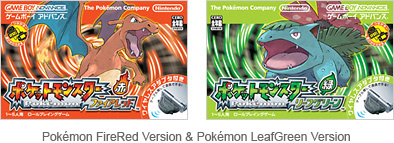
17 Pokémon FireRed Version and Pokémon LeafGreen Version were released for the Game Boy Advance in Japan on 29th January 2004 and were remakes of Red and Green with a whole host of additional features.
Iwata: At the time of FireRed and LeafGreen, I remember thinking that while these were great titles for people new to Pokémon, at the same time, it wouldn't do for them to be identical to the old titles now that the hardware had changed to the Game Boy Advance18. That’s why I went to show you the Wireless Adapter19 which had just been completed. Basically, my intention was to put the hard sell on you.
18 The Game Boy Advance was the next console in the series after the Game Boy Color and was released in Japan on 21st March 2001.
19 The Wireless Adapter was an accessory for the Game Boy Advance which allowed multiplayer wireless play. It was released packaged with Pokémon FireRed and LeafGreen in Japan on 29th January 2004.
Ishihara: Yes, that’s right! (laughs)

Iwata: I thought that I simply had to show this to Ishihara-san, the "King of Portable Toys".
Ishihara: At the time, I was asking really obvious questions like: “So ‘wireless’ means you’re getting rid of the wires, right?” (laughs)
Iwata: Yes, you did! (laughs)
Ishihara: Well, we’d put together Pokémon with this kind of analogue idea of trading Pokémon by connecting consoles with the link cable. I fired all sorts of questions at you like “What kinds of things will this make possible?” and “How far apart can you be and it will still work?” In the end, I grasped the innovative nature of the Wireless Adapter and remember thinking: "The power of science is staggering!" (laughs)
Iwata: “The power of science is staggering!” That’s the very first line you hear in Red and Green, isn’t it? (laughs) Anyway, because you responded so positively to the Wireless Adapter, we got Game Freak to check it out.
Morimoto: Yes, that’s right. At that time, we conducted trials to see from what distance the wireless signal could be picked up and Game Freak staff would leave the meeting room saying: "Look! It's still connected!" (laughs)
Iwata: It was great fun to witness those scenes of everyone trying it out. It really did turn into a gathering of people all saying: “The power of science is staggering!” (laughs) But I think that being able to really sense the possibilities of wireless technology led us to the Nintendo DS we have today.
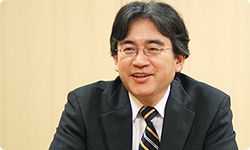
Ishihara: I see what you mean.
Iwata: Later on, the developers of the hardware told me candidly that at first they thought we were crazy to sell something that costly bundled together with software. But they also said that the experience they gained with wireless technology proved incredibly valuable when it came time to work on the Nintendo DS.
Ishihara: In fact, the Wireless Adapter meant that even just trading Pokémon felt really fresh and completely different from how it had been up to then.
Morimoto: The scene at Pokémon events completely changed, didn’t it?
Iwata: Back when you had to use link cables, people would wait patiently in long lines for hours on end…
Ishihara: And then suddenly we could distribute Legendary Pokémon in an instant.
Iwata: When you remade Red and Green, using the Wireless Adapter in that way allowed you to devise whole new gameplay elements. This time round, a decade has passed since Gold and Silver were first released so I wanted to see new elements that would make players feel that this was a whole new Pokémon game. And Ishihara-san, you were pondering this issue yourself… (laughs)
Ishihara: Yes, that's right! (laughs)
Iwata: Then at just the right time, we made ‘Walk with me!’20 and I went to show it to you. After all, you are "the King of Portable Toys"! (laughs)
20 ’Walk with me! Do you know your walking routine?’ is a Nintendo DS software title released in Japan on 1st November 2008. It records the user’s steps at one minute intervals allowing the user to compare the distance they walk during their daily routine.
Ishihara: As the software element of ‘Walk with me!’ was developed at Creatures Inc., I was really interested in it. Then when I was actually shown the Activity Meter21, I thought it was really interesting that there was no screen displaying the number of steps and that it was so light that you could just slip it into your pocket without it remotely getting in the way. Then, when the title was released, I began to walk around with the Activity Meter every day.
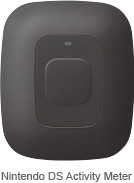
21 The Activity Meter is a pedometer that was packaged together with ‘Walk with me!’ and records the number of steps the user takes. It can also be attached to dogs.
Iwata: You’ve got a dog, so I imagine that you were already in the habit of going out for walks.
Ishihara: As both my wife and I have dogs, we bought two Activity Meters and went out for walks with them attached to the dogs' collars. But one day, I managed to drop one. (laughs) Then around a month later, I was walking the dog as usual when I saw this black, muddy object lying stuck in a puddle…
Iwata: Surely it couldn’t have been…! (laughs)
Ishihara: That’s what I thought: “Surely it can’t be…” (laughs) I thought I must have dropped it somewhere like this, but a whole month had passed so naturally I’d given up on it. When I picked it up and wiped the mud off it, I saw that the red LED was flashing. I thought “Wow!” and brought it back home. When I connected it to the DS, I realised that it was the one that had been attached to Pocky. Oh, I should explain that Pocky is the name of one of my dogs! (laughs)
Iwata: Right. (laughs)
Ishihara: So though it had been exposed to the elements for a whole month, it was still working. I remember thinking that this was amazing. Not that Nintendo are making any sorts of guarantees like that about the product…
Iwata: Indeed we’re not! It’s only splashproof22! (laughs)
22 A splashproof item is designed to resist exposure to light rain and sweat as opposed to a waterproof item, which can be immersed in water.
Ishihara: But because of that personal experience, I thought that I'd like to try to use that device in some way. I thought that you could really develop the idea for a Pokémon title if, for example, we could put the pedometer data straight into a game. I also thought you could do something interesting with it using it as a successor to the Pokémon Pikachu pedometer.
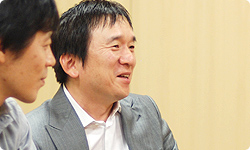
Iwata: So you said: “Couldn’t this be made into the rebirth of the Pokémon Pikachu device?" When we were working on the Activity Meter, the Pokémon Pikachu had completely slipped our minds. Although they've got measuring steps in common, the manner in which they came about was completely different and none of the developers for the two projects overlapped. When you first made the proposal, I suddenly realised: "You're exactly right!" When you're developing a wide range of products, you can get it into your head that there's no connection between them. But sometimes something strange can happen and a chance occurrence will suddenly make you see a connection between them. I think this is often the way that new possibilities get uncovered.
Ishihara: With Gold and Silver, we released Pocket Pikachu Color! Gold and Silver Together!23 This time round we wanted to include a device like that to show the way that the title’s scope has multiplied.
23 Pocket Pikachu Color! Gold and Silver Together! was an enhanced version of the Pokémon Pikachu device released in Japan on 21st November 1999. As well a having a colour display, it could also connect to Pokémon Gold and Silver.
Iwata: When I heard you say that, I knew exactly what you meant.

5. We Were Greedy With The Features
Iwata: What did you originally think you'd need to do to turn the Activity Meter for Nintendo DS into a suitable successor to the Pokémon Pikachu pedometer?Ishihara: We decided to call it the Pokéwalker24 and we definitely wanted it to have a screen. We then asked Game Freak to come up with proposals for what kind of features it would have and how it could be used to play Pokémon. The proposal was a document about three times as thick as the specification document we’d had for Pokémon Pikachu! (laughs)
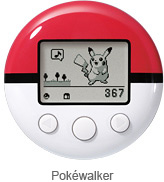
24 The Pokéwalker is a pedometer device that comes packaged with Pokémon HeartGold and SoulSilver. As well as being able to transfer a single Pokémon caught in the games to the Pokéwalker, the player can use it to catch wild Pokémon or use the Dowsing machine to locate items.
Morimoto: We did go and write a very thick document. (laughs)
Ishihara: I never thought you'd go that far! (laughs) I thought that if we started working on all those things at this stage, the games' release would end up getting put back again…
Iwata: (laughs)
Ishihara: Originally, I just had an idea that players would be able to take other Pokémon besides Pikachu out for a walk.
Iwata: But in the end, you’re able to go out walking with any Pokémon.
Ishihara: And not only that: you can even go out walking with one Pokémon who can befriend a new one and come back with it. That was one of the things that we were ultimately able to realise in the game, but that original specification document was really packed full of a whole host of features.
Morimoto: What we originally thought was that just being able to walk around with any Pokémon you liked would be certain to prove really fun. We thought that this in itself would be enough to make a great element for the game, so we went ahead and worked on getting this right. Then in addition to this, we made it so the player could catch other Pokémon, locate items and connect to other Pokéwalkers via infrared communication.
Iwata: The design is very much in keeping with the Pokémon look, isn’t it?
Ishihara: With regard to the design, there was perfect material waiting to be used in the animated series. At first in the games, there was never a clearly-defined image of what the Poké Ball should look like. So the director, Yuyama-san25, was good enough to make a proposal of how they should look. He said: “How about we make the Poké Ball so that it’s small at the start, but when the button in the centre is pressed, it expands greatly and can be thrown?”
25 Kunihiko Yuyama is an anime director who oversees both the Pokémon animated television series and the movies.
Iwata: That's how the Pokéwalker ended up being about the same size as the Poké Ball before it expands in size, with a diameter of 48mm and a thickness of 13.9mm.
Ishihara: Right. The style for a Pokémon Trainer is to clip three of these Poké Balls on the left and right side of their belts. The Pokéwalker has pretty much ended up looking exactly like these which makes me want to clip on six and walk around with them! (laughs)
All: (laughter)
Ishihara: So I was wondering if we could ask people to buy six. But of course, that would be going a little too far… (laughs) But just as the Wireless Adapter made FireRed and LeafGreen into a much more appealing product, the Pokéwalker enhances HeartGold and SoulSilver. Also, as a portable toy that enables communication, the Pokéwalker is itself able to communicate with the Nintendo DS and by connecting with the console, it can evolve. The combination of HeartGold and SoulSilver with the Pokéwalker in this sense represents a very significant multiplication of the scope of the series.
Iwata: But to be honest, an item like the Pokéwalker wouldn't normally be made for an individual piece of software… (laughs)
Morimoto: Yes, you’re right! (laughs)
Iwata: But Pokémon is something of a special case and when "the King of Portable Toys", Ishihara-san approves of something that enthusiastically, I feel that we need to do something with it. Of course, you couldn’t have simply used the Activity Meter for Nintendo DS in its original form, and though it was a real rush to settle on the features and design in such a short period of time...
Ishihara: Well, if there hadn't been an Activity Meter for Nintendo DS...
Iwata: There’s absolutely no way you could have done it.
Ishihara: We wouldn’t have reached this point.
Iwata: We wouldn’t have been able to reach this point. Actually, while the Activity Meter for Nintendo DS isn’t the sort of item that was built to withstand being dropped in the bath or put in the washing machine, you can put it in your pocket and it will withstand sweat. As we wanted to ensure that it was splashproof and could withstand these kinds of everyday conditions, we changed its shape a number of times right at the end to improve its ability to withstand water. It was precisely because it had gone through these kinds of tests that Ishihara-san’s dog Pocky's Activity Meter was able to survive one month out in the rain. (laughs) If the Activity Meter hadn’t still been working, it’s possible that you wouldn't have been struck with the inspiration to use it in Pokémon.
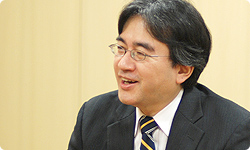
Ishihara: I think that’s true.
Iwata: Let’s turn now to the games themselves. Morimoto-san, what sort of issues did you bear in mind as you worked on the remakes of Gold and Silver?
Morimoto: The first thing that I knew I needed to bear in mind was to respect the feelings of those people who'd played Gold and Silver ten years before. I think that players have very strong memories of the game, so they'd think things like "Ah, this trainer is still strong" and "If I do this here, this is going to happen". I knew I needed to respect these feelings.
Iwata: So you’re saying you wanted those people who’d played the game ten years before to be able to feel a real sense of familiarity when they played the new Pokémon?
Morimoto: Right. But at the same time, there are a large number of players who had no knowledge of Gold and Silver and who first played Pokémon on the Game Boy Advance or the Nintendo DS. While we were creating the game, we were conscious of making it so that these players could play with the sense that it was a totally new game.
Iwata: So it’s not simply a remake of Gold and Silver?
Ishihara: We were very greedy with the features we put in.
Morimoto: Yes, we were incredibly greedy with the features this time round! (laughs) We basically included all the game elements that had been in Diamond and Pearl26 and Platinum27.
26 Pokémon Diamond Version and Pokémon Pearl Version were released in Japan on 28th September 2006 for the Nintendo DS.
27Pokémon Platinum Version was a new version of Diamond and Pearl released in Japan on 13th September 2008.
Iwata: Features that weren’t in Gold and Silver?
Morimoto: That’s right. It’s just as if we've taken a selection of the best features of the series on DS.
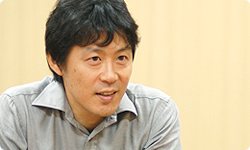
Iwata: And in addition, you’ve also added the Pokéwalker.
Morimoto: That's why we had to make rather severe demands on our staff, which is something I hope to improve on in future.
Iwata: But surely in trying to include all of these new features within the framework of the original Gold and Silver, you must have encountered no shortage of problems and elements which weren’t really a good fit.
Morimoto: There were a huge number of issues like that. For instance, at the start I very optimistically thought that we’d just be able to port the Wi-Fi element from Platinum and you’d be able to play as normal.
Iwata: By Wi-Fi play you mean, for example, having up to twenty people gathered in the Wi-Fi Plaza playing simultaneously, right?
Morimoto: Right. Now, it's very easy to say that we're going to use the original Gold and Silver as the base and add all of the game elements from Diamond, Pearl and Platinum, but it's actually not as simple as that. Well, I wonder if it's a good thing for a director to have such an optimistic attitude as if anything would be possible… (laughs)
Iwata: (laughs)
Morimoto: But in the end I think that the fact that I was optimistic was the reason why we managed to include all the features I wanted to.
Iwata: So you think the generous amount of features included in the games stems from the optimistic nature of your ambitions.
Morimoto: Well, no. I think it stems from the efforts of the staff.
Iwata: Actually, there was a moment when it didn’t look like you’d be able to take part in today’s interview. (laughs)
Morimoto: Ah, I'm really sorry about that.
Iwata: No, I’m just glad you could make it!
Morimoto: Yes, it’s a relief to be here! (laughs)
6. Pokémon Players Past and Present
Iwata: It’s exactly ten years since Gold and Silver were released. The girls and boys who were playing Pokémon then are now fully-grown adults.Ishihara: That’s right.
Iwata: But I’ve got a feeling that even people who haven’t played Pokémon in a long time are liable to pick up HeartGold and SoulSilver, thinking: "Ah, this takes me back..."
Ishihara: Right. The new graduates who are entering our company now are exactly the people who would have once played Gold and Silver.
Iwata: So if new company employees are aged twenty-two, they would have been twelve back then. They would have very much been at the heart of the Gold and Silver generation.
Ishihara: That’s why when you talk with them about the new games, you'll see their eyes shining with excitement as they ask you: "We're going to get to do that again?" Things have come round full circle since that time when they were at their most impressionable, and they really feel they want to give it another go.
Iwata: In that sense, ten years constitutes one self-contained period, doesn’t it?
Ishihara: I take it you know Ryo Ishikawa, the professional golfer? Well, I heard that when he was at primary school, he wrote: "In the future, I want to be a professional golfer or a Pokémon Master."
Iwata: Really?
Morimoto: I didn’t know that.
Ishihara: I read about it in the paper. Apparently, when Ishikawa-san was young, his father let him try all sorts of things so he could find something he could really get absorbed in. Of course, when his father took him golfing, he found it really interesting. But when he took him to a baseball game, he was already bored by about the bottom of the first innings and did nothing but sit there playing Pokémon. Personally, I’d have loved him to have become a Pokémon Master! (laughs)
All: (laughter)
Ishihara: Of course, it’s much better that he became a professional golfer! (laughs) He’s seventeen now, so I'd imagine that around the time he entered primary school, he would have played Gold and Silver. So I really want kids who were seven or eight, or maybe ten years old, to play the new Gold and Silver on Nintendo DS now that a decade has gone by. With the addition of the new device, the Pokéwalker, I believe they’ll enjoy it not simply out of a sense of nostalgia but because they can see the way in which Pokémon has evolved.
Iwata: I’m sure it will feel really fresh and fun to them. Now, to mark the release of HeartGold and SoulSilver, do you have any message for our customers?
Morimoto: Well, the original titles were released for the Game Boy Color, so with the Nintendo DS, the hardware has skipped over the Game Boy Advance to land two generations ahead, so...
Iwata: So would you say the evolution is rather like that of a Bulbasaur that’s skipped the stage of being an Ivysaur and gone straight to a Venusaur?
All: (laughter)
Morimoto: It's really developed in a way that makes us want to show off that “staggering power of science”. This is something I definitely want players to enjoy. Also, with these titles, the way in which trainers and Pokémon relate has become a major theme and this has been added to the story. We came up with the titles HeartGold and SoulSilver as we decided these were appropriate to express this theme.
Iwata: So you’re saying that you'd like players to enjoy the kind of world view that's invoked by the titles HeartGold and SoulSilver?
Morimoto: Very much so. In addition, as I mentioned a little earlier, we’ve been greedy in the amount of gameplay elements we’ve squeezed in there. There’s so much included that I even had colleagues saying to me: “Are you sure you should be going this far with a remake?” In that sense, it's not simply a remake - I think it's more than that. For that reason, I would like to see these games enjoyed by as large a number of people as possible.

Iwata: Now over to you, Ishihara-san.
Ishihara: I feel that the breadth of the game has been greatly increased by the inclusion of the bonus Pokéwalker. There are so many gameplay elements included that you almost want to say: "Is this really just a bonus add-on?” I’d like to see parents and their children, along with grandparents and grandchildren, enjoying dividing up their roles, saying: “Granddad, could you clip this on when you go out for a walk?”
Iwata: You can play together with other players or take both roles yourself.
Ishihara: Absolutely. As there will definitely be one Pokéwalker included with each copy of the game, I'm really looking forward to seeing how players will use them to broaden their enjoyment of the game. And then there's also the appeal and excitement of those four-legged Pokémon, Entei, Raikou and Suicune…
Iwata: Ah, the Legendary Pokémon. If they meet them, the players will be really excited. (laughs) And they’re not easy to catch.
Ishihara: What's really interesting this time round is that there will be players coming from both standpoints: there’ll be players who have memories of all this from a decade ago, and then there’ll be players thinking “What kind of Pokémon is this!?” That’s why I’d like to see players with experience from ten years ago giving newcomers tips on how to play.
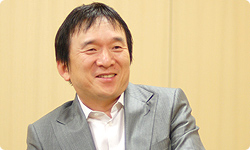
Iwata: What you just said, Ishihara-san, is precisely what I wanted to emphasise. Firstly, I believe that players who have no experience with Gold and Silver will find plenty to enjoy in these titles, approaching them as entirely new Pokémon titles. At the same time, those people who played the game ten years ago, and who may well have memories of devoting huge amounts of time and energy to it, will be able to enjoy it all over again thanks to the “staggering power of science”.
As Ishihara-san just said, I think it would be incredibly exciting to see HeartGold and SoulSilver acting as methods of communication between the new generation of Pokémon players and those who played Gold and Silver ten years ago. Whether it’s parents, older brothers or sisters, or in some cases grandfathers and grandmothers, I’ve got a feeling that, for the first time in a long time, this is a game that can bridge that generation gap.
What’s more, with the bonus addition of the Pokéwalker, this looks like another medium with which to enjoy communication. I'd love to see people with pedometers shaped like Poké Balls out and about around the town.
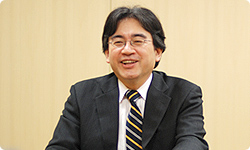
Ishihara: Ah, there’s just one more thing I want to add. Pokémon Trading Cards have also come full circle and there’s an all new series being released in October28. We've experimented with new types of artwork, which I hope everyone will enjoy.
28The English version of the latest release went on sale all across Europe in February 2010. The French, German, and Italian language expansions will be available beginning in May 2010.
Iwata: Ishihara-san, when you made Gold and Silver ten years ago, you said you thought of it as the finish line. But the way you’re talking now makes it sound like that finish line is still a long way off! (laughs)
Ishihara: Do you know what? I think you’re right! (laughs)
All: (laughter)
This page has been viewed 19347 times.
Last updated 12 Jul 2015 21:13
by Sunain.
Revision #14
Revision #14
Page Tags:
Interview
Iwata Asks












